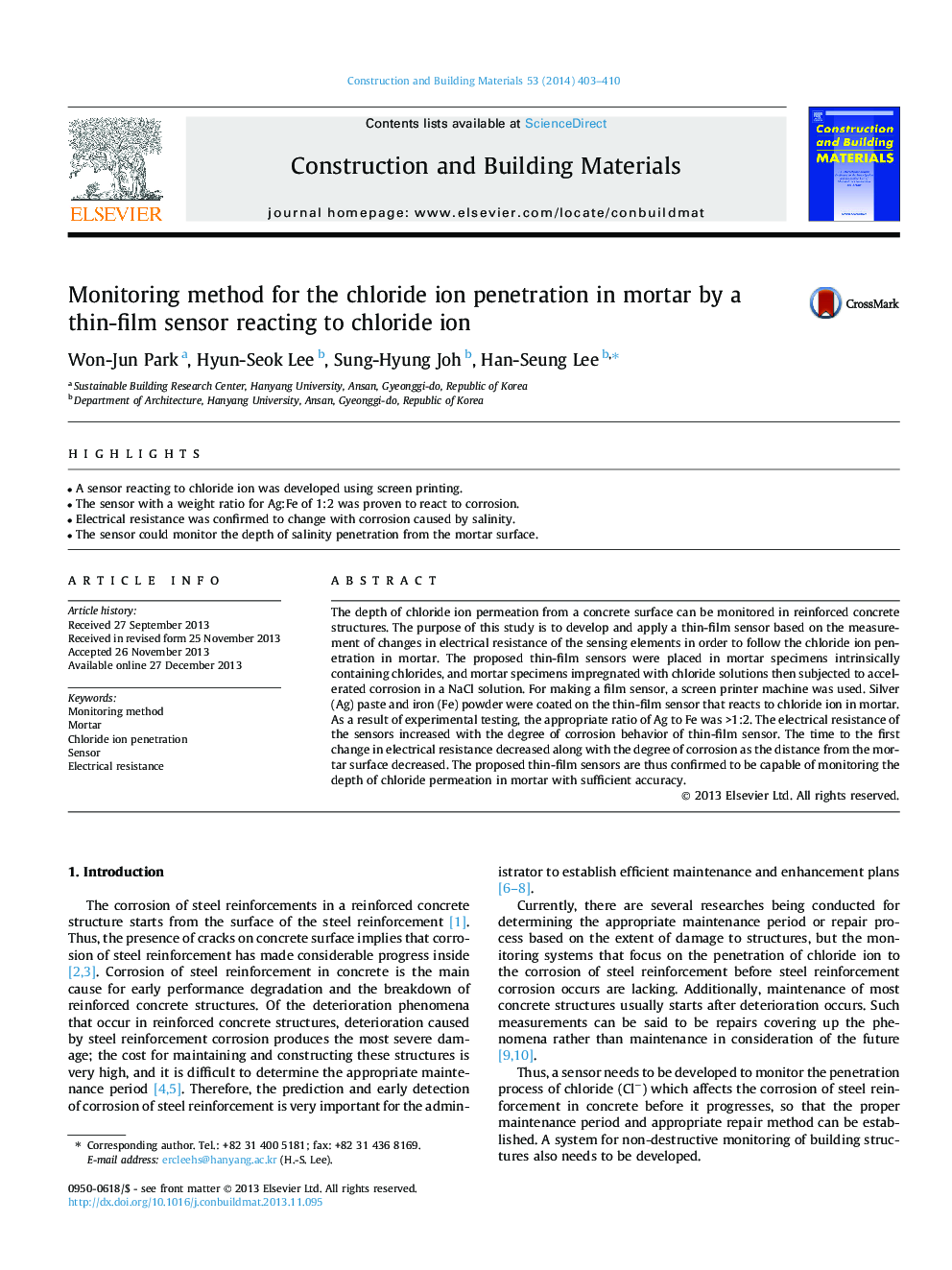| Article ID | Journal | Published Year | Pages | File Type |
|---|---|---|---|---|
| 257766 | Construction and Building Materials | 2014 | 8 Pages |
•A sensor reacting to chloride ion was developed using screen printing.•The sensor with a weight ratio for Ag:Fe of 1:2 was proven to react to corrosion.•Electrical resistance was confirmed to change with corrosion caused by salinity.•The sensor could monitor the depth of salinity penetration from the mortar surface.
The depth of chloride ion permeation from a concrete surface can be monitored in reinforced concrete structures. The purpose of this study is to develop and apply a thin-film sensor based on the measurement of changes in electrical resistance of the sensing elements in order to follow the chloride ion penetration in mortar. The proposed thin-film sensors were placed in mortar specimens intrinsically containing chlorides, and mortar specimens impregnated with chloride solutions then subjected to accelerated corrosion in a NaCl solution. For making a film sensor, a screen printer machine was used. Silver (Ag) paste and iron (Fe) powder were coated on the thin-film sensor that reacts to chloride ion in mortar. As a result of experimental testing, the appropriate ratio of Ag to Fe was >1:2. The electrical resistance of the sensors increased with the degree of corrosion behavior of thin-film sensor. The time to the first change in electrical resistance decreased along with the degree of corrosion as the distance from the mortar surface decreased. The proposed thin-film sensors are thus confirmed to be capable of monitoring the depth of chloride permeation in mortar with sufficient accuracy.
